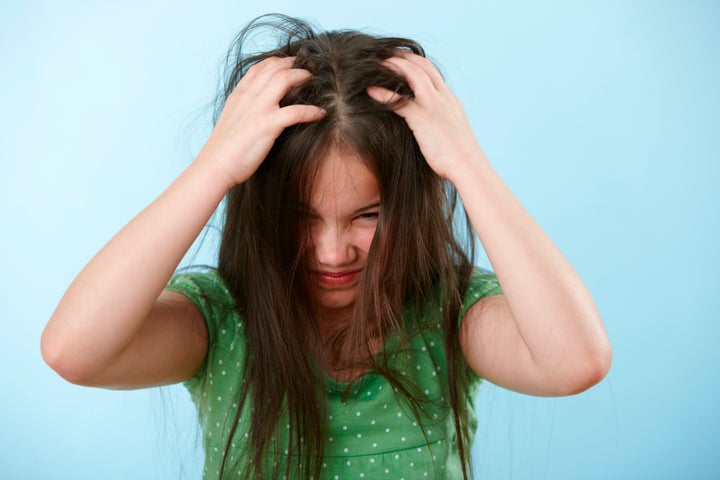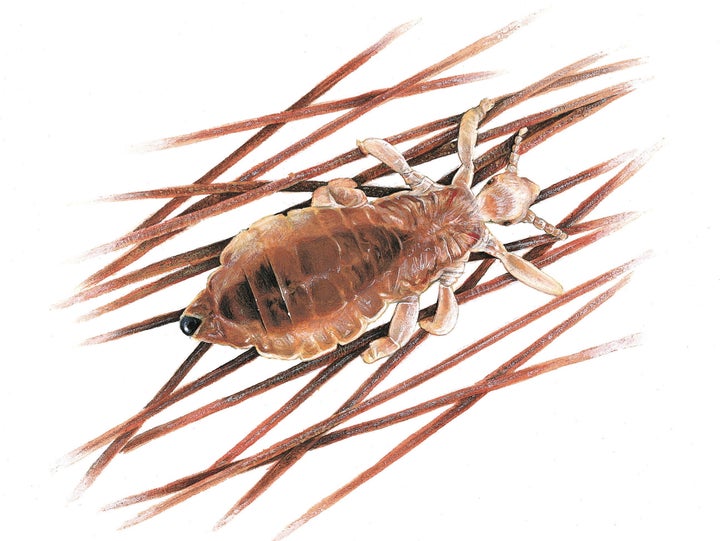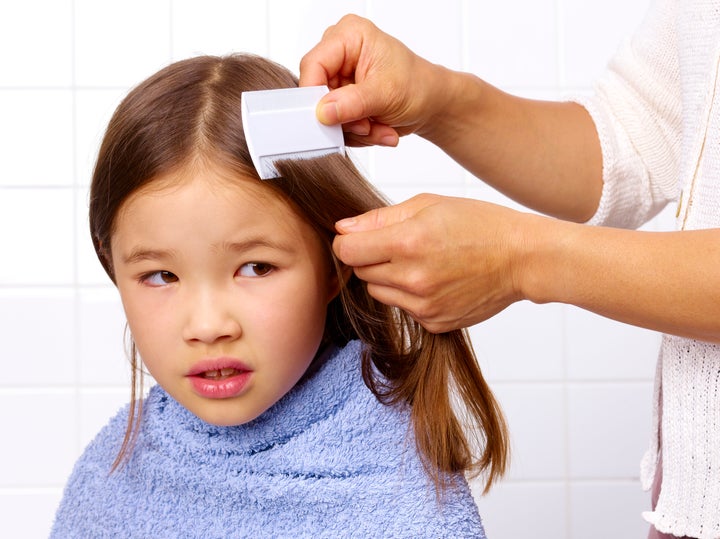A worrying 98% of nits in America are now resistant to the over-the-counter head lice treatments, according to new evidence.
The boom of the “super nit” in the USA is becoming an increasing concern for parents, as the study by Southern Illinois University found that 104 out of 109 lice populations had genetically mutated to protect themselves against the chemicals in common head lice treatments.
But what can parents in the UK do to protect their little ones against nits? And more importantly, how do you get rid of them once the inevitable has happened?

What Are Head Lice?
Head lice (or nits) are small wingless insects that live on the human scalp. They inject saliva, which contains an anti-coagulant 9that prevents blood clotting), into your skin and then feed on your blood.
Baby lice mature to adulthood within 10 days and after that are they able to reproduce, causing a fast spread.
Why Is It Important To Treat Head Lice?
Nits do not carry disease, but are extremely irritating, and if left untreated can turn into a full infestation and cause secondary infections as a result of scratching at bites and open wounds (especially in children who can’t help but scratch).
Christine Brown, ex school nurse and advisor to the Medical Entomology Centre, told The Huffington Post UK: “Head lice can be uncomfortable, can prevent sleep and concentration, and can cause bullying.”
So it is important for parents to deal with the problem quickly.

How Does My Child Get Head Lice?
Head lice are not able to fly and even struggle moving far because of their short legs. In order for them to move from one host to the next, they have to come into close contact with each other.
This is why head lice are more common in children than adults, as they need hosts to rub heads or stand next to another person to travel.
Infestations tend to be worse in children with longer hair, as this makes it easier for the parasites to move between the individual strands.
How Can I Check My Child For Eggs?
Brown told HuffPost UK that the best known symptom of head lice is itching, but this isn’t always the best method of detection for parents.
“Only about 30% are aware of it [through itching],” she said.
Instead, parents should try detection combing - looking before your child shows symptoms: “The only true way of knowing is by regular checks with a head lice detection comb.
“Research has shown that detection combing is nearly four times more effective than visual inspection for finding live lice. Nits are dead or empty shells, which can be removed by hand or by combing.”
Morgane Salin, Senior Marketing Manager at Vosene Kids, suggested that parents look when they are washing their child’s hair.
“Ideally, each time you wash your child’s hair or as often as possible, check the hair at the front of the head, behind the ears and at the nape of the neck. This is where the eggs are most likely to hide and stick to the hair shaft.”
How Can I Get Rid Of Nits?
Head lice populations grow more slowly than most people think, but females do lay several eggs a day and adult lice can live for as long as a month so it is important to act as soon as you suspect there might be a problem.

The NHS advises the best head lice treatment involves treating everyone in your house. All the members of your family, should be treated on the same day.
Products: There are several different products that can be applied to the scalp and hair to kill head lice, including dimeticone (4%) lotion or lotion spray which is left on overnight or dimeticone (4%) gel which is only left on for fifteen minutes. These are still recommended by the NHS, however, they are increasingly becoming less effective as “super nits” are becoming resistant.
Wet Combing: This involves removing head lice with a special fine-toothed comb. It’s suitable for everyone and is relatively inexpensive. Combs with flat-faced teeth spaced 0.2-0.3mm apart are best for removing head lice, although combs with smaller gaps can be used to remove eggs and nits after treatment.
Remember that head lice can live off the head, for example on soft furnishings such as pillow cases, on hairbrushes, or on coat hoods for up to 48 hours.
SEE ALSO
Head Lice Infestation Video Is So Gross You Shouldn’t Watch It
The Number Of Head Lice On This Child’s Head Will Make Your Skin Crawl *Shudders*
Can I Prevent My Child From Getting Head Lice?
Unless you keep your child at home for the next couple of years and stop them mixing with other children, it’s going to be a tough job.
According to a survey by Once A Week UK, at any one time one in 10 students at primary schools in the United Kingdom has nits.
Brown explained: “Lice are spread only by head-to-head contact, so sleepovers, after school activities, playing with friends and visiting family are the most common places for children to pick them up and pass them on.”
Why Is There No Nit Nurse At My Child’s School?
“To adhere to best practice, each of the 5.5 million primary school children in the UK would need to be checked by the nit nurse once every week,” said Brown.
“So the likelihood of each child receiving a thorough check is minimal at best. Even if the nit nurse checked and found lice it would still be up to the parents to choose and use a treatment.
“Parents need to feel empowered to check for head lice regularly and feel confident about using an appropriate treatment when an infestation is found.”
